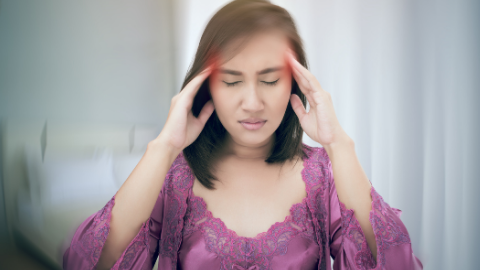Beyond BPPV: Understanding Vestibular Rehabilitation

Beyond BPPV: Understanding Vestibular Rehabilitation
2 hours 30 minutes
The instructors
Beyond BPPV Webinar Description
Join Cheryl Wylie, vestibular physiotherapist, in this 2.5-hour course titled Beyond BPPV – Understanding Vestibular Rehabilitation.
This live online course will take your vestibular knowledge a step beyond the classic BPPV condition, where you will learn about the most common conditions that cause vestibular dysfunction and gain an understanding of vestibular rehabilitation.
When we look at a typical caseload of vestibular physiotherapists, we see two diagnoses most often over any others: Benign Paroxysmal Positional Vertigo (BPPV) and Unilateral Vestibular Hypofunction (UVH).
This course is here to focus on the latter, along with its counterpart, Bilateral Vestibular Loss (BVL). UVH and BVL result in reduced function of the vestibular nerve in either one or both ears.
Patients typically report dizziness, vertigo, and imbalance along with reduced quality of life. The good news is that many of these patients are candidates for vestibular rehabilitation, so gaining an understanding of how to assess and implement a vestibular rehabilitation program will allow you to greatly impact their recovery.
During this course, we will:
- Review the anatomy and physiology of the vestibular system in relation to UVH and BVL
- Discuss the primary causes of UVH and BVL including vestibular neuritis, vestibular labyrinthitis, and ototoxicity
- Go over the signs and symptoms of UVH and BVL, comparing their presentation to BPPV
- Learn about the Vestibular Ocular Reflex (VOR) and how it is affected by vestibular hypofunction
- Complete a vestibular assessment without any specialty equipment (e.g. vestibular goggles, VNG equipment, or balance assessment platforms) including VOR testing, balance and gait assessments and motion sensitivity testing
- Be able to generate a diagnosis based on your assessment findings
- Learn the concepts of vestibular rehabilitation, including specific vestibular exercises that can be found on Embodia and how to implement them.
Who is this Course For?
This online course is intended for physiotherapists, occupational therapists, chiropractors, kinesiologists, athletic therapists, PTA/OTAs and anyone else in the healthcare industry who has an interest in vestibular rehabilitation. Vestibular and concussion therapists who are looking to understand Embodia’s vestibular exercise platform, education material, and resources will also find this of value.
Note that no pre-requisite course or knowledge is required. If you are interested in learning about BPPV however, check out Embodia’s BPPV Feature Course also with Cheryl Wylie as well as the Benign Paroxysmal Positional Vertigo (BPPV) Resource Package which contains 15 BPPV exercises, patient education, and an assessment and treatment flow chart.
The instructors

MSc(PT), Vestibular Physiotherapist, Co-Founder of Healing Vertigo
Cheryl Wylie is a registered physiotherapist, receiving her Masters of Science in Physiotherapy from McMaster University in 2010. Prior to this she completed her Honours Bachelor of Science degree in Kinesiology from the University of Waterloo. She continued her education and completed with success the Vestibular Rehabilitation Competency-Based Course in Atlanta, GA hosted by Emory University and the American Physical Therapy Association. Since then, she has taken ongoing courses with a focus on vestibular and concussion rehabilitation, as well as shared her knowledge through in-services and lectures both locally and abroad.
Cheryl is passionate about increasing accessibility of physiotherapy services and has developed an App and YouTube Channel called Healing Vertigo. These platforms increase awareness of BPPV and provide testing and treatment videos to assist patients and practitioners alike in the treatment of this condition.